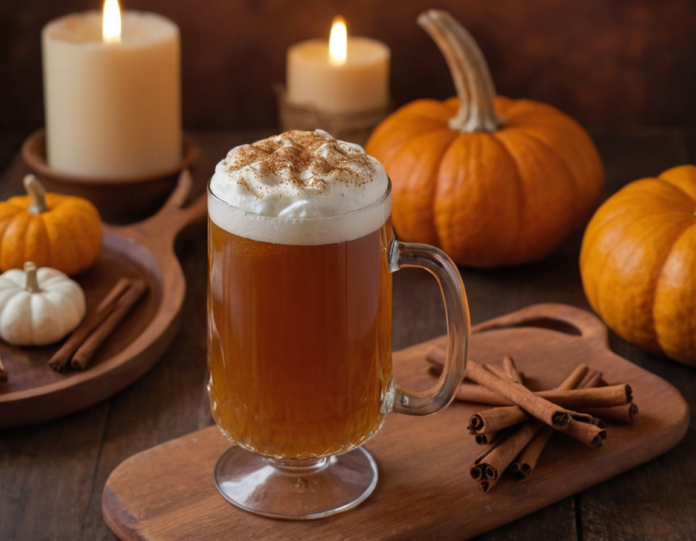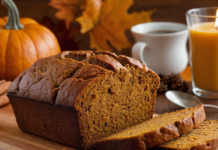Pumpkin beer recipe is a seasonally appropriate favorite, combining the rich flavors of pumpkin with warm spices and malted grains. Brew it yourself, and you can customize it to get the right flavor balance of sweetness, spice, and hop bitterness. Pursuing a good recipe, you can produce a one-of-a-kind, flavorful beer that embodies the spirit of fall.
Production and Maturation of Pumpkin Beer
The foundation of a well-balanced pumpkin beer starts with high-quality ingredients. The malt base controls the brew’s body and sweetness, while hops introduce much-needed bitterness to counteract the natural sugars of the pumpkin.
Pumpkin purée is the main ingredient, adding body and a gentle earthy sweetness. Fresh or canned purée is fine, but no added sugars or preservatives. Roasting fresh pumpkin concentrates its flavor and adds depth to the beer.
Many spices are used to obtain the hallmark flavor. Cinnamon, nutmeg, ginger, and cloves are popular options. These spices can easily overpower the malt and hops and should be used in moderation. Use whole spices if you can – these dissolve some flavor but not enough to make the beer cloudy.
The yeast strain used strongly affects the final profile. Ale yeast is typically used, yielding a slight fruitiness that complements the pumpkin and spices. Choosing the right yeast ensures a clean fermentation process and balances the beer overall.
The Way to Brew Sunny Pumpkin Beer
- Prepare the ingredients: Measure malt, hops, pumpkin purée, spices, and yeast.
- Mashing: Get some water hot and steep the grains, pulling as much fermentable sugar out of them as you can
- Mixing in Pumpkin and Spices: Mix in the pumpkin purée and add spices to taste
- Boil & Hop: Bring the mixture to a boil and add hops at various points in the process to control bitterness.
- Cooling and Fermentation: Cool the wort, pitch yeast, and ferment.
Choosing the Right Malts for a Depth of Flavor
Light beers have a mild malt profile, contributing to a crisp finish, while maltier beers are heavier and sweeter. A blend of base malts, such as pale malt or Maris Otter, lays the foundation.
Crystal malts impart caramel and toffee notes, making the beer more complex. Some roasted malts can add mild nutty or chocolaty notes in small quantities. But roasted malt in excess can drown out the pumpkin flavor.
Selecting a suitable malt blend is critical to a smooth, drinkable beer. Don’t go crazy with the special malts, as too many will make for an overly sweet or heavy beer, so balance is paramount. The idea is to support the pumpkin without overshadowing it.
When to Use Coconut Milk and How to Make It Less Finicky
The spices should complement but not overshadow the pumpkin beer. Whole spices rather than ground ones prevent unseemly bitterness and cloudiness.
Cinnamon and nutmeg lend warmth, and ginger gives a little spice that lifts the beer. Cloves provide depth but should be used sparingly as they can overwhelm. Some brewers also use allspice for a note of complexity.
To allow brewers to control the spicing and prevent over-spicing, spices can be added at various stages. Some are introduced during the boil, and some later in fermentation for a fresher aroma. Small batch testing ensures a delicate balance isn’t lost with the beer being too heavy.
Hops are key when it comes to balancing sweetness. Gentler hop varieties, like Fuggle or East Kent Goldings, give a bit of bitterness that works well with the pumpkin’s natural sweetness.
For a more assertive hop presence, American varieties like Cascade or Willamette brighten things up with citrus and floral notes. Excessive hopping, however, can overwhelm the delicate spice and malt profile, so balance is crucial.
A small hop addition post-fermentation boosts the aroma while preserving the beer’s smooth demeanor. Getting the hop balance right makes a balanced end product.
Solving issues with your brew
Cloudy Beer
- Strain the solids out using the appropriate filtration method
- Cold crash the beer to let it settle before you bottle.
Excessive Bitterness
- Cut down on early boil hops.
- Opt for a hop variety that has a low alpha acid percentage.
Weak Pumpkin Flavor
- Roast fresh pumpkin before you add it to the brew.
- Pumpkin purée adds to the mash.
The Best Finish: Bottling and Carbonation
Making the right choices while bottling results in carbonated, balanced beer. The common practice of adding priming sugar before bottling to create carbonation is also controlled to prevent excessive fizz.
Seal the bottles tightly and store them in a cool, dark place for conditioning. Put the beer to rest for a few weeks. This will give it more depth and smoothness. Extended conditioning produces a smoother flavor, with the individual spices developing and marrying together over time.
Sampling small portions during conditioning gives insight into potential drinking windows. Some brewers like to age pumpkin beer for a month or more to draw out its full complexity.
Pairings and Suggestions for Serving
Pumpkin beer goes great with all sorts of food, making it that much more seasonally relevant. Complementary dishes include:
- Savory Pairings: Roasted turkey, grilled sausages, or sharp cheddar cheese.
- Sweet Pairings: Pumpkin pie, spiced apple tart, or cinnamon donuts.
- Casual Pairings: Soft pretzels, toasted nuts, caramel popcorn.
An important factor is the temperature of the beer when served. Too cold can dull the spices; too warm might make it taste cloying. A temperature range of 45 55°F works best to achieve the perfect flavor balance.
Innovative Recipes for Pumpkin Beer
While a classic pumpkin beer will follow a tried and true recipe, variations can be the home to fun flavors and styles. Some brewers tap into smooth and creamy vanilla beans, while others, like that of maple syrup, can give this offering some natural sweeteners.
For bolder versions, barrel aging in bourbon lends deep, oaky flavor that amplifies the spice complexity. Adding coffee or chocolate malts can also provide richness and make the beer reminiscent of a spiced stout or porter.
Different spice blends can be customized just by experimenting. Some brewers opt for a quiet aroma, while others embrace a strong, highly spiced character. Your recipe could be adjusted to every personal taste, so it guarantees a personal brew.
Conclusion
Homebrewing pumpkin beer also allows for a beer that is perfectly unique to the home brewer, with flavors that can be rich, well-balanced, and of high quality. By using quality ingredients, carefully measuring out your spices, and controlling fermentation, you can make a balanced beer. Making your pumpkin beer is a rewarding and flavorful experience, whether you enjoy it fresh or age it for complexity.



